These days, people are not only concerned about having beautiful and comfortable homes, but also to leave less ecological footprints. So, if you are also looking for an eco-friendly, sustainable and innovative building material for your home interior, cork is one of the best materials to incorporate into your home decor. Cork has a remarkable combination of properties, which makes it suitable for application in buildings and infrastructures. It is a naturally renewable material made from the bark of the cork oak tree and is harvested periodically from the living trees. According to ‘John Wiley & Sons’ (Author of Webster’s New World College Dictionary), Cork board is cardboard made with granulated cork, used especially for insulation.’
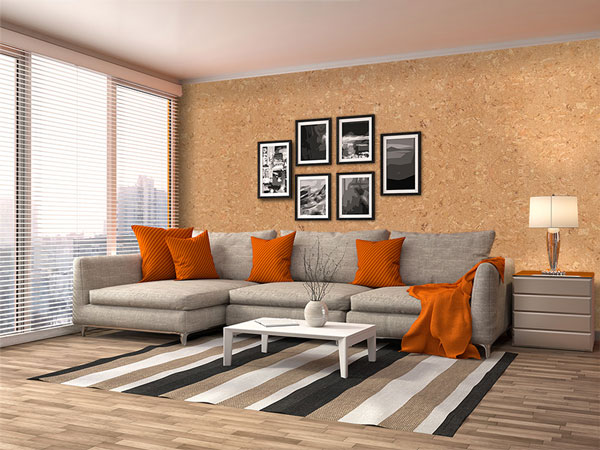
Cork: Green Material
Cork board is a natural product that can blend with any décor. The cork extraction process is sustainable so that the trees do not undergo overharvesting. According to ‘Luis Gil’ (published in Environmental, Sustainability and Ecological Aspects of Cork Products for Building), ‘the periodic extraction of cork oaks for cork production, produces between 250% and 400% more cork than they would produce if it they were not harvested.’ For the flooring products, cork is ground up, compressed and formed into sheets and bonded with resins. Functionally, it is used as sub-flooring and also on walls, ceilings, and floors. It is valued highly for its aesthetic appeal. It is a leading building and interior material.
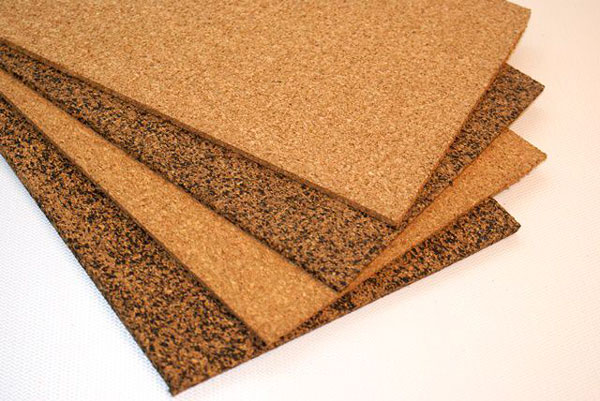
According to ‘Luis Gil’ (published in Environmental, Sustainability and Ecological Aspects of Cork Products for Building), ‘Cork products for the construction industry have an important contribution and remarkable advantages. The use of cork products is also ecologically essential because it is a renewable and long-life product. The production and use of cork play an important role, being a factor in the preservation and survival of some species.’
Like any material, the use of Cork board also has its advantages and disadvantages. So, here we have discussed the pros and cons of cork.
Advantages of Cork Board
The cork board has the following benefits:
01. Durable
- It resists cracking and abrasions.
- Being flexible, it returns to its original shape, even when compressed, thereby becoming highly durable. If damaged, it can be repaired. So, it has a very long life of more than 50 years when used in interiors.
02. Safe
- It is fire and insect resistant.
- It is waterproof.
- The soft surface of the cork floor acts as a kind of cushion and provides certain amount of protection when someone accidentally slips or falls. So, it can be applied to rooms of both children and elderly to prevent them from injuries of falling.
Also Read:
Importance of Furniture & Lifestyle for Children Bedroom
Excellent Foyer Decor Tips & Its Basics
03. Aesthetically Versatile
Cork flooring is available as tiles and planks of various styles several sizes and varied designs. According to ‘Donald Watson’ (Author of Time-Saver Standards for Building Materials & Systems), ‘Cork tile is composed of compressed granulated cork bonded with a heat processed resinous binder
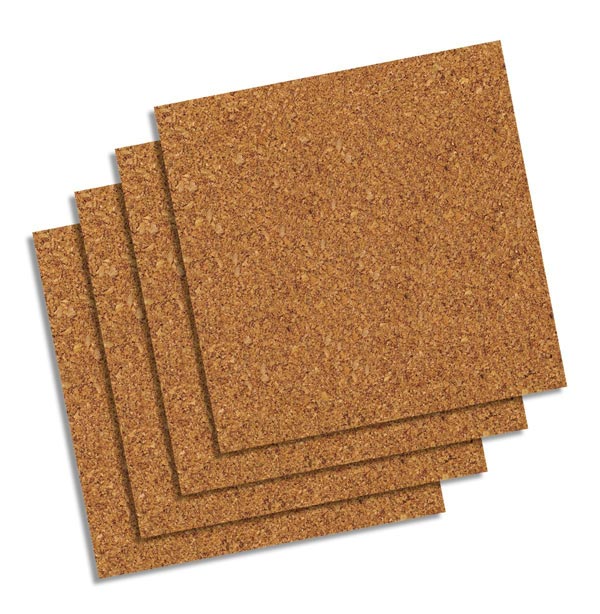
04. No Waste is Generated
- The manufacturing process of cork generates almost no waste.
- It is antimicrobial, hypoallergenic and totally recyclable.
05. Installation
- Installing cork tiles is very easy.
06. Maintenance
- The material is easy to clean and maintain. Due to this, cork floors promote higher indoor air quality.
07. Low Heat Conductivity
- The cork accumulates heat without blocking the cold from outside.
08. Other Advantages are as follows
- It acts as a thermal barrier as well as a vibration dampener.
- It is a good insulator. It acts as a barrier for transmission of noise. Any room floored with cork reduces noise from being transmitted through the floor to the ceiling below.
- It is naturally resistant to depressions from foot traffic, and its tight cellular nature provides a spring effect which is absent in most floors.
- It is environmentally friendly. It is a completely natural and replenishable material.
- It is the most sustainable material. The bark that is removed from the trees only takes about 6 years to grow back.
- The material gives comfort to the walkers.
Disadvantages of Cork Board
01. Damage
- Cork is very soft material and has the tendency to get damaged. A hit by a sharp object, can puncture the floor.
02. Gets Permanently Stained
- It absorbs the liquids spilled on the floor and makes the floor permanently stained.
03. The Temperature and Humidity Changes
- It expands and contracts with the changes in temperature and humidity.
04. The Difficulty with replacement
- The other canvases can’t be pasted over the cork wallpaper. It has to be completely removed and the process of removal is difficult.
05. Other Disadvantages are as follows
- The cork tiles have to be installed only by highly trained skilled professionals.
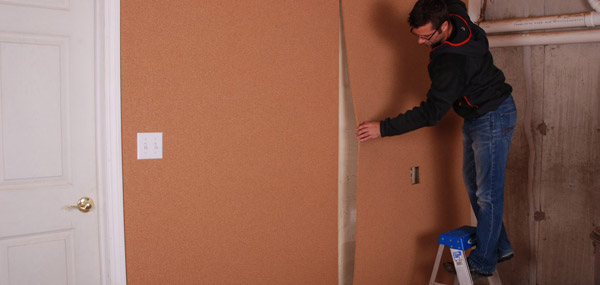
- Cork is light sensitive, so when sunlight falls on the cork, it tends to fade. Over the years, it looks dull.
- It is vulnerable to scratching.
- There are very few options of colours to choose from. It easily absorbs the stain and makes the floor surface look uneven.
- Improper maintenance may lead to damage to the coating.
Applications of Cork Board in Interiors

Nowadays, there is paradigm shift in our lifestyle wherein even designers choose eco-friendly materials over the conventional elements in construction and interiors. Cork is used extensively as a backing material to other materials for its compressive strength. It has applications as flooring, decorative wall, wall cladding, as well as few decorative ceilings. As it waterproof and fire-resistant, its application in bathrooms, kitchens, and laundries ranges from flooring to cabinetry and benchtops. They are used to absorb vibration in buildings with metal structures. Cork is used in modern furniture. The cork board wall tiles add immense beauty to the room.
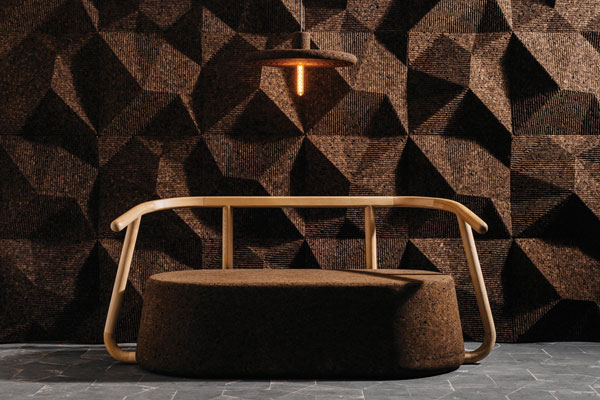
There are few new and innovative cork materials having applications in interiors. Some of these include: densified insulation corkboard, cork wall, cork panels, cork wall tiles, cork absorbent materials, etc. Their uses include floor coverings, wall and ceiling overhangs, false ceilings, screen and door panels, skirting boards, sandwich panels and furniture. The famous architectural masterpiece, Fallingwater by ‘Frank Lloyd Wright’ also embraces its natural theme with eco-friendly materials like cork tiles on floors and on the walls.
Process of Cork Extraction
Cork is extracted from early May to late August. The extraction of cork causes no permanent damage to the tree. Cork is extracted in the following procedure.
- When the tree turns 25-30 years of age, the cork is removed for the first time. The tree is harvested once in 9 years. The harvester slices the cork layer on the trunk of the tree. Horizontal cuts are made at the base of the trunk and below the lowest branches. Few vertical cuts separate the circumferential cork ring into sections of the appropriate size. Using the wedge-shaped handle, the harvester strips each panel of the cork from the tree.

- The planks are stacked outdoors and left to cure for months. The fresh air, sun, and rain encourage chemical changes that improve the quality of the cork. By the end of the curing process, the planks are flattened and the original moisture content is reduced by about 20%.
- The planks are then treated with hot water to remove dirt and water-soluble components like tannin. At the end of this process, the planks are soft and more flexible. They are then lowered in large copper vessels filled with boiling water containing a fungicide. Heavyweights are submerged for 30-75 minutes.
- When the planks are removed, a poor outer layer of cork is scrapped off. They are stacked in a dark cellar and allowed to dry and cure under controlled humidity for a few weeks.
- These planks are trimmed to a uniform rectangular shape and sorted by quality.
How to Install the Cork Wall?
01. Preparation: For the ease of installation, unwind the cork sheet, pre-cut, invert the pieces and place weight to flatten. Clean and dry the walls.
02. Cutting: The cork has to be trimmed with a utility knife, carpet or blade.
03. Adhesive: Apply adhesive to the wall surface.
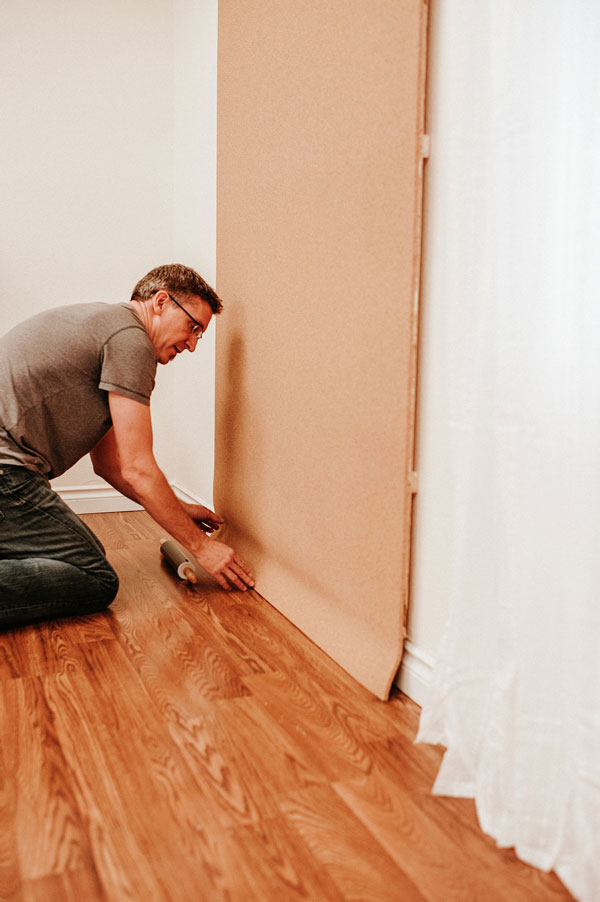
04. Installation: After the application of adhesive, position the cork sheet lightly. Use nails in corners.
Summing up, cork is the sustainable and green building material used for interiors. It is appreciated for its aesthetic appeal. It blends with any décor. It adds immense beauty to the room. It is functionally used as sub-flooring, walls, ceilings and floors. The modern furniture is also made from cork. Choosing an environment friendly material like cork plays an important role in economical sustainable development.
Also Read:
Home Decor Tips for this Monsoon!
Mood Board for Interior Design | A complete Guide
Wall Cladding: Give Your Home Trendy and Modern Aesthetics!
Image Courtesy: Image 1, Image 2, Image 3, Image 4, Image 5, Image 6, Image 7, Image 8

